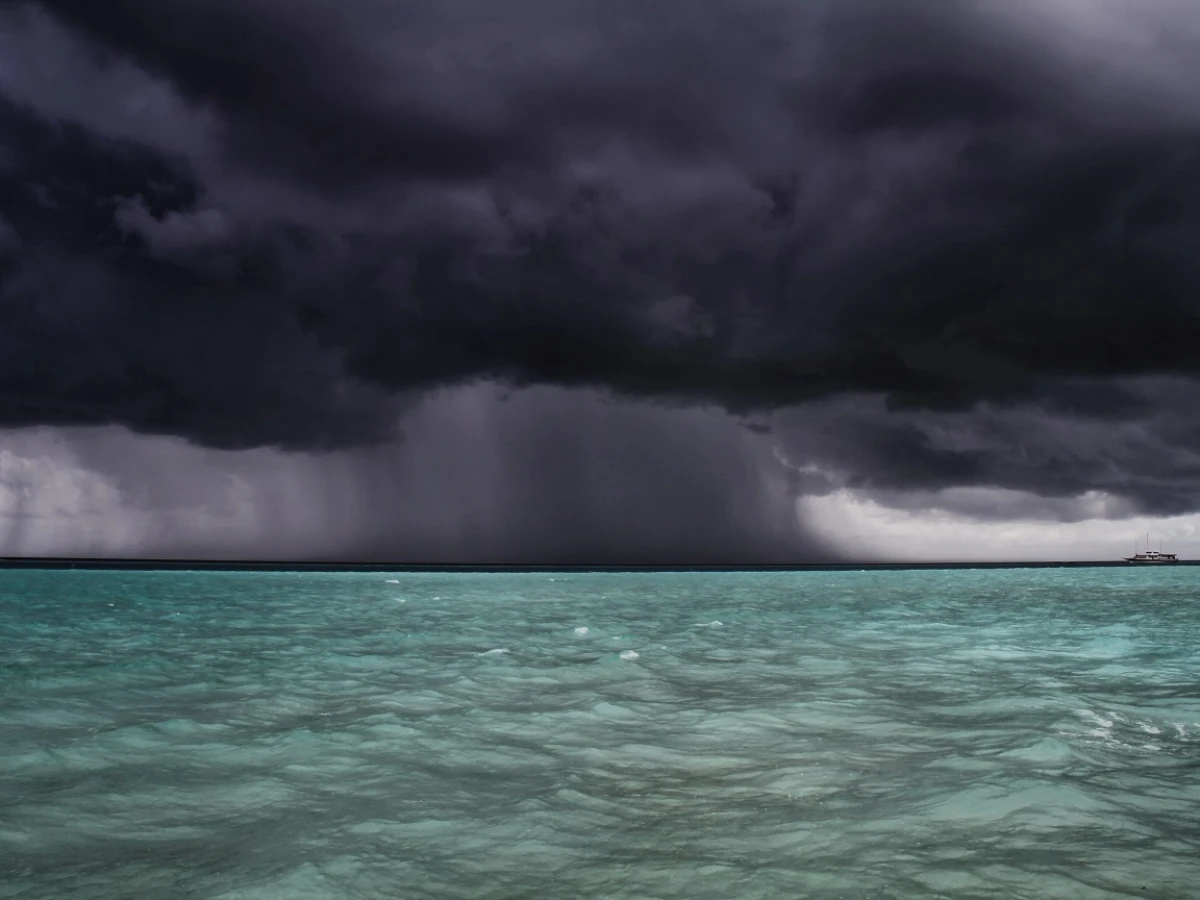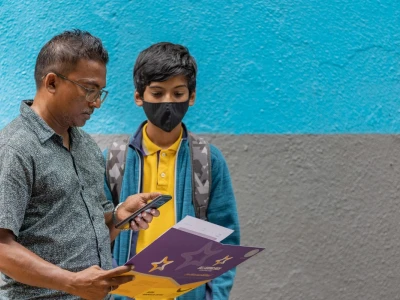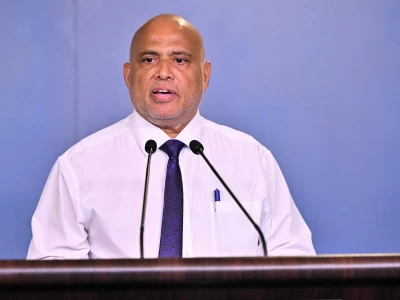
School holiday weather: Is July or December better?
Since the school annual holidays have rotated to the middle of the year, parents have been complaining about the bad weather timing.
Top Stories
By
Aminath Shifleen
When do we experience the worst weather in Maldives?
I posed this question to people from different industries; fisherman, boat crews and island stationed workers from all sectors. One third of them answered that the weather is the worst in June/July.
Then I looked into the statistics from Maldives Meteorological Service, or commonly known as the Met Office. They shared statistics of Maldivian wind directions, humidity, temperature and rainfall numbers from the last 12 years with us.
After reviewing those statistics, I still ended up asking the question: when do we experience the worst weather in Maldives? This is why:
Even after the national curriculum reform was implemented in 2015, the annual school holidays always fell to the year end -November/December. However, following the massive changes that came with the COVID-19 pandemic adaptations, school holidays had rotated to the middle of the year since 2021. Due to the travel restrictions levied by the Health Protection Agency (HPA), the 2021 school holidays passed without the possibility of travelling anywhere for vacation.
This year 2022 was different; long before the holidays arrived, airlines had gotten fully booked and bags had been packed. The holidays coincided with Eid-ul-Adha and people were anxious to stretch their legs after being under lockdown for so long and restricted with the pandemic adaptations.
Just a few days before the holidays started, gloomy clouds gathered and blocked the skies, and thunder and lightning filled our humid air. Winds picked up and the sea became so stormy that the Met Office began issuing white and yellow alerts. At this point, Maldivians realised that their monsoon calendar’s ‘June/July’ forecast was coinciding with the holidays. There are songs written about the stormy weather during this period. Thus began the debate and the complaint towards the education ministry for allowing the coincidence.
The Ministry responded, saying that they had indeed considered weather conditions before deciding the holiday period. They stated that they had researched Met Office statistics from the past five years and discussed with a mass of parents before deciding on June/July. They also declared that Met reports show the weather conditions are basically the same during both November/December periods and June/July periods.
Rains of Hulhangu; winds of Iruvai
For ages, Maldivians have followed India's ancient monsoon calendars, which basically describe the Hulhangu (south-west) monsoon as ‘stormy’ and the Iruvai (north-east) monsoon as ’sunny’.
Maldives has moderate weather year round, raining and sunny alternately every month. Visible seasonal changes occur usually in the beginning of the month of May, when the’ Kethi Nakaiy’ changes wind direction and turns the sunny side of life gloomy and charged with stormy static in the air. Winds pick up, and make the sea foamy.
The longer monsoon among the two, south-west winds commonly blow through the year until December. Assumedly, the sunny weather will slide in right away, but this water nation experiences a weather condition known locally as Iruvai Halha (north-easterly gusts) during the transition of the two monsoons.
These turbulent seasonal transitions occupy all of November and December, lasting until the beginning of January the next year. Stormy seas, roaring winds, heavy rains, the whole June/July package again. The old annual school holidays fell between 25 November and 10 January before the pandemic came and disrupted the academic calendar.
Now to examine the Met Office statistics from the past decade. In order to compare, we used rainfall and wind readings. The only constant in these statistics was that Maldivian weather is fairly unpredictable: the monsoon calendars make very little accurate observations as year after year, the incidence of rainfall and sunshine don't coincide.
For example, the most rainfall was recorded 12 years ago, 2010, in the month December. The following year it was the month of October. 5 years ago, the most rainfall was recorded in the month of May. 2 years ago it was July.
Summary of Met Office statistics from the past 12 years:
-
1-
July experienced more rainfall than December.
-
2-
Wind was stronger in July than December, and even stronger in June
-
3-
Wind speed determines how rough the sea is, so the wind readings dictate that July has more rough sea
-
4-
There were more sunny days (23 days) in December compared to July
Finally, in summation of the Met Office statistics, the verdict is that weather does indeed get terrible in June/July, more so than any other period around the year. However, in relation to the weather going down in November/December, the difference between these two down times is very little. December does experience heavy rainfall, but it also has brought more sunny days. On average, the seasonal variation between these two sectors is almost the same.
These statistics cannot portray an accurate weather reading, since the data is collected over months and years. For instance, even though it rains very heavily for one whole day in July, and the rest of the month goes dry and sunny, the statistics could read July as having experienced heavy rainfall on a monthly average basis. In conclusion, the most accurate reading can be done with daily observations, on an hourly basis. So we at Dhauru even took a look at these months, days separately.
Observations for weather, July vS December from past 5 years:
-
1-
The sea is considered ‘rough’ when wind speed exceeds 12 knots; in 2021, July experienced 13 days of rough sea while December experienced 14
-
2-
July seas were extremely rough
-
3-
In 2020 July experienced more rough seas, but in 2019 December was rougher
-
4-
In 2018, all the days in July were rougher than those of December
-
5-
July 2018 was an exceptionally bad weather period
-
6-
In December 2017 had the worst weather
This study of the past five-year meteorological statistics prove that the education ministry is on par with the seasonal changes; there isn't much of a seasonal difference between July and December.
Experiencing weather
Although Met reports don't show much of a difference in the weather between these two undisputed months of the year, the people who are travelling and those that are on their islands experience the weather conditions completely differently in real time.
For example, even though the wind speed is greater in December than in July, the south-west monsoon may favour the geographical layout of the atoll and take the gusts outwards rather than inwards, making the weather seem deceptively calmer. As a result, the weather is proclaimed to be less aggressive in south-west December than in south-west July for inter-atoll travellers.
Atolls in the Upper North and Down South of the Maldives will experience weather changes as per their atoll formation, but not in central Maldives. So while people experience the volatile weather of Maldives differently in different areas of the country, it is understandable how some are adamant that July is worse for wear than December even when statistics show otherwise.
Ali Shareef, a fisherman from Mathiveri, North Ari atoll, told Dhauru that during the seasonal transition into Iruvai monsoon, he experiences the sea to be rougher in December due to the north-easterly gusts. However, since the wind direction is predominantly south-west, the atolls in the north experience calmer seas. So those fishermen targeting the Yellow fin tuna, including Ali Shareef, head over to the northern regions for better fishing.
In his opinion, despite stronger winds, the heaviest rainfall is experienced in the months of May, June and July. Rainfall is at 70% during those months of the south-west monsoon, he said.
The month of December proves to be perpetual. If the weather goes bad, it remains the same way throughout the month. However, it is not easy to predict December weather.
The Director General of the Met Office, Ali Shareef (name coincidence**) told Dhauru, “It rains on most days during the south-west monsoon, but weather can change abruptly; one week could go calm, and the next might get very rough. Whole Hulhangu Monsoon goes like that”.
“Perhaps this is why people are disgruntled with school holidays falling on June/July”.
Ali Shareef the fisherman said that he prefers the old holiday period that falls in December, but he did duly note that December weather is not much better.
A mother of three children, Maryam Zoona told Dhauru that she did not get to enjoy the school holidays with her children because it falls smack dab in the middle of the south-west monsoon. She said that she did not feel there was a single sunny day throughout the holiday period, and that she dreaded going picnicking to nearby islands with her children in such weather.
The debate about the best time period for school holidays are still ongoing, but as per the Met office statistics and heresy, one thing is for certain; July or December, they are both peak-rainy months.




